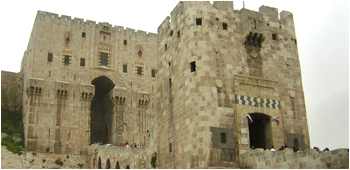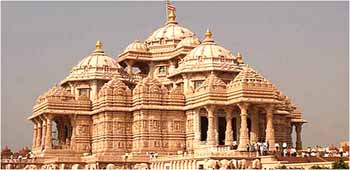Art & Culture

The craft tradition in India has whirled around religious values, confined needs of the commoners, as well as the special needs of the clientele and royalty, along with an eye for overseas and home trade. Prehistorically Indian handicrafts were basically made for day after day use, the yearning for aesthetic application soon saw development of flooding designs and motifs. The incalculable artistic and ethnic assortment has enabled a fusion of motifs, techniques and crafts to increase on this land.
Featured Craft - Shantiniketan Leather, Kalighat Paintings of West Bengal, Kantha Embroidery of West Bengal, Clay & Terracotta of West Bengal.
These are: Stone age, Paleolithic era, Mesolithic era and Neolithic era, Bronze age.
Indian Paintings

Indian painting is considered the mirror to the country's rich culture and heritage. Through these paintings, the painters give vent to their thoughts and expressions. Indian painting is known worldwide for its authenticity and uniqueness.Indian painting is in high demand among the people of west. The Indian paintings like India are vast, diverse, historic and unique. Be it the murals of Ajanta Ellora, the Buddhist palm leaf manuscripts, the Jain texts or the Mughal, Deccan and Kangra discipline of miniature painting. Indian painting has evolved from the hinterlands and has remained immortal in the annals of history.
Featured Paintings - patachitra, silk painting, glass painting, Tanjore painting, marble painting and more.
Indian Dances

India is the homeland of various dance forms, both classical and folk. The various Indian forms act like a window to India's rich cultural reservoir. Dance is the form of art, wherein the body is used as a medium of communication. Indian dances have played an influential role in many other realms of art including poetry, sculpture, architecture, literature, music and theatre.
Featured Dance forms - Bharata Natyam,Kathak,Kathakali, Kuchipudi, Manipuri, Mohiniyattam, Odissi, Central India, Eastern India,
North East India,Northern India, North West India,Southern India,South West India.
Indian Festivals

In India, there is an underlying similarity in many of the festivals as are the stark differences in the styles and forms of celebrations observed by different religions. Every occasion is celebrated with gaiety,pomp and favour. These colourful and happy festivals bind the people of the nation across various states and religions in a unique way and provide a spectacle that cannot be be experienced anywhere else in the world.
Featured Festivals - Holi , Diwali, Dussehra, Durga Puja,Raksha bandhan, national festivals.
Indian Sculpture

Sculpture date back to the Indus Valley civilization, where stone and bronze carvings have been discovered.The principal sculptural techniques used in India have undergone little changes throughout the ages.A statue is a sculpture portraying a specific entity, generally a person, incident, occasion, animal or object. The primary concern of a statue is depictive representational. Adding serenity to beauty, Indian statues are perfect collectible items to decorate your home or workplace to bring life into environment.
Featured Sculpture - Indian Temple Sculptures, Khajuraho Sculptures of India, Indian Marble Sculptures,
Arjuna`s Penance, Indian Sand Sculptures, Indian Rock Cut Sculpture
Indian Music

Music has always been an important part of Indian life. The range of musical phenomenon in India extends from simple melodies to what is one of the most well- developed "systems" of classical music in the world. There are references to various string and wind instruments, as well as several kinds of drums and cymbals, in the Vedas. Some date the advent of the system of classical Indian music to Amir Khusrow. Muslim rulers and noblemen freely extended their patronage to music.
Featured Music Forms -Hindustani Gharanas, Carnatic Music, Ghazals, Indian Fusion Music, Folk Music, Shayari.
Indian Textiles

India has a diverse and rich textile tradition. The origin of Indian textiles can be traced to the Indus valley civilization.Indian textiles had great market in a number of countries.The popularity of Indian textiles is evidenced in the number of words that have made their way into English: calico, pajama, gingham, dungaree, chintz, and khaki.
Featured Textiles - Silk, wool, linen, cotton, synthetic fibers like rayon, nylon and polyesters and some inorganic fibers such as cloth of gold, glass fiber and asbestos cloth.
Indian Architecture

The architecture of India is rooted in its history, culture and religion. Indian architecture progressed with time and assimilated the many influences that came as a result of India's global discourse with other regions of the world throughout it's millennia-old past. The architectural methods practiced in India are a result of examination and implementation of its established building traditions and outside cultural interactions.